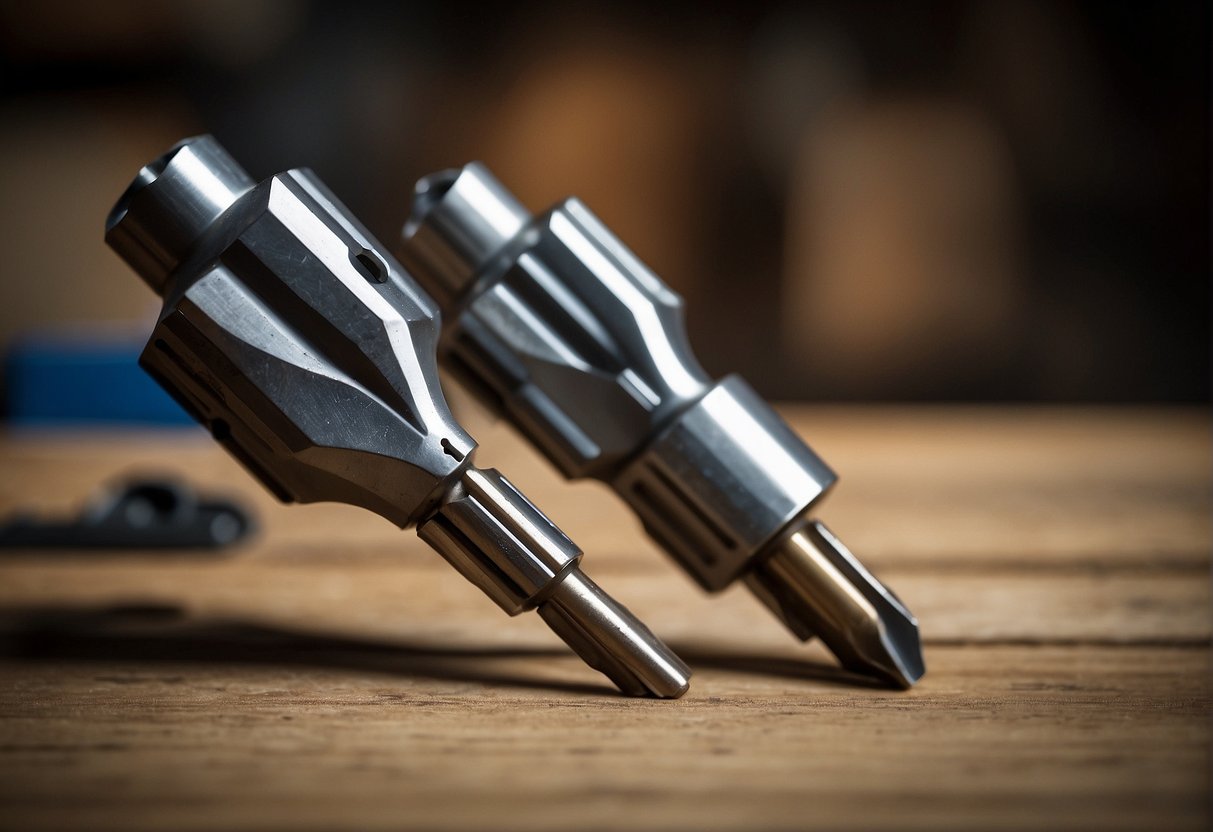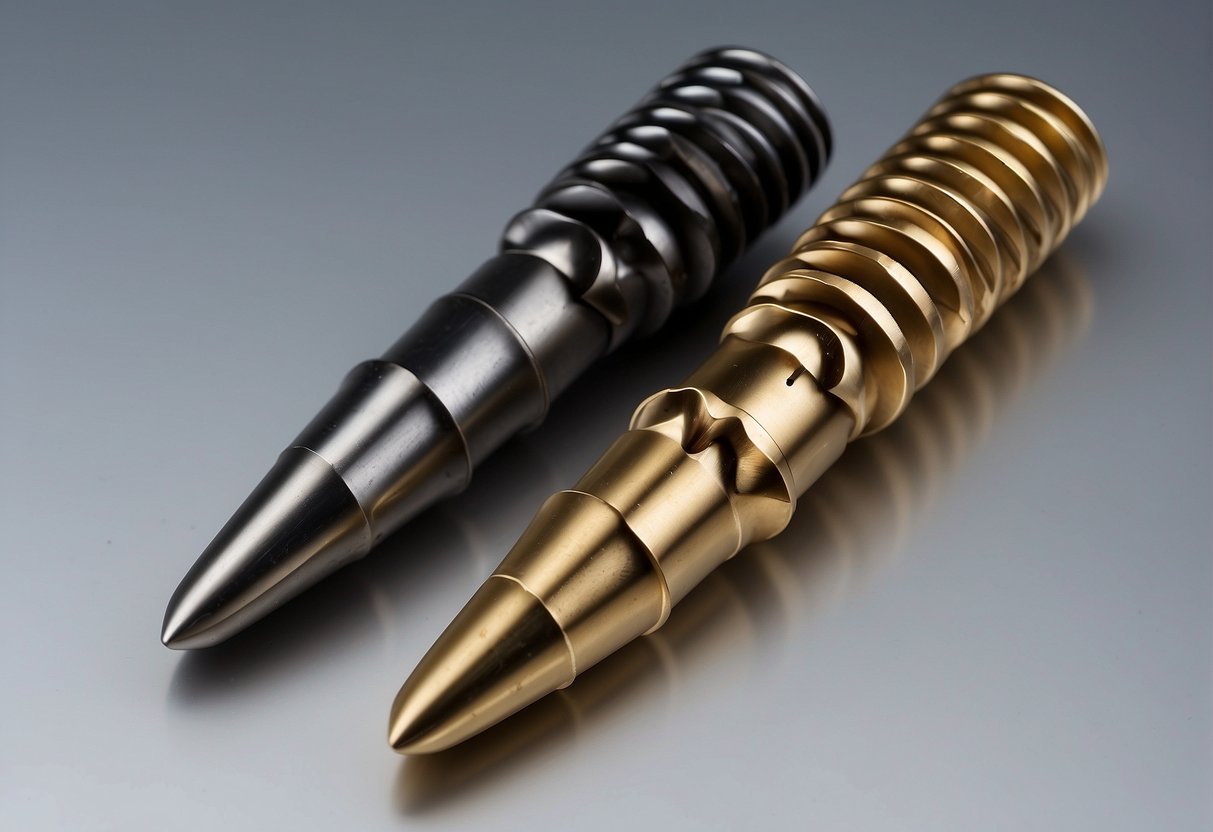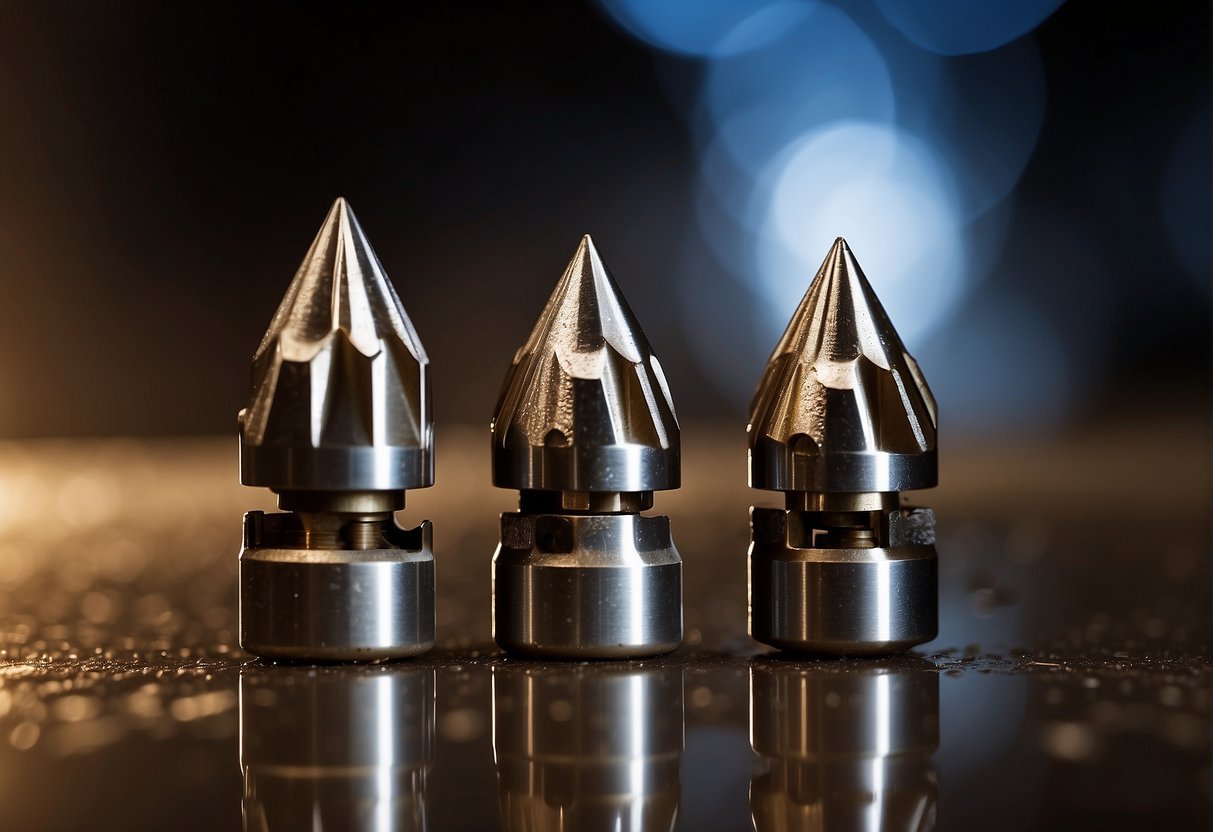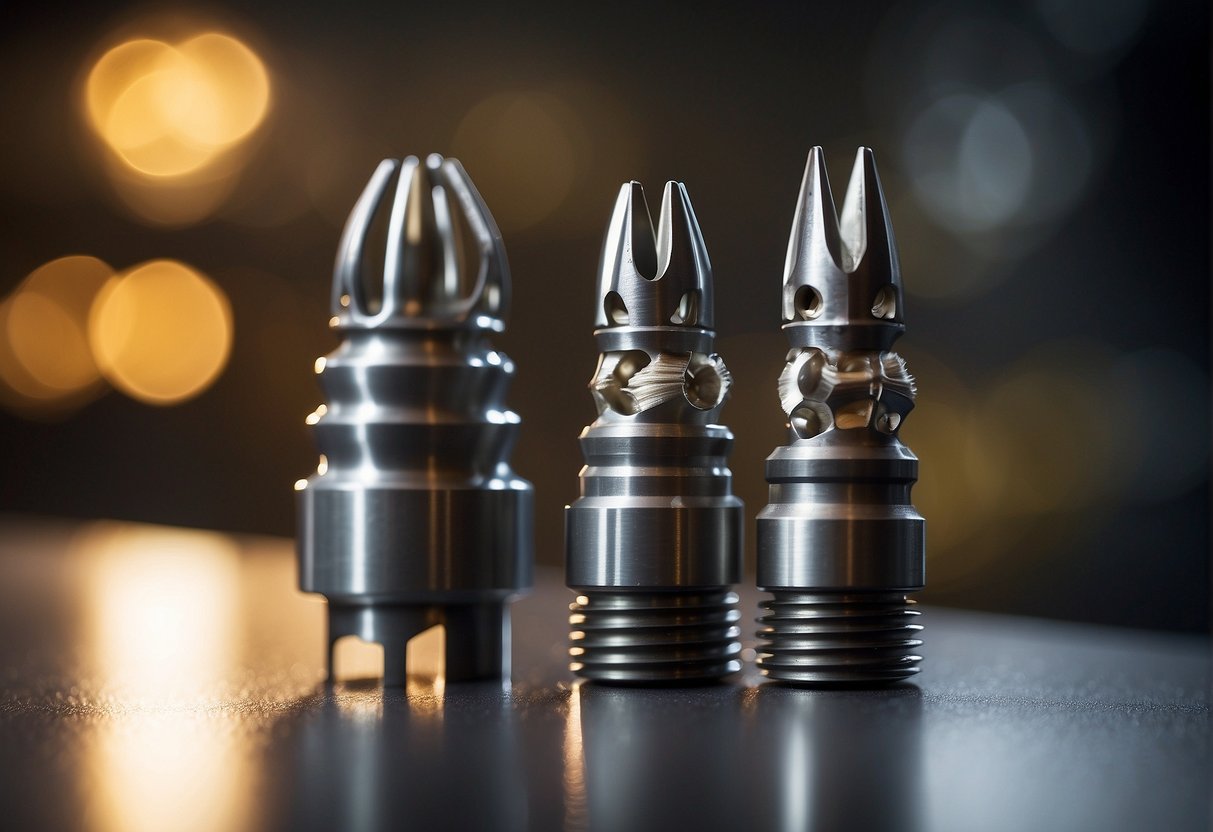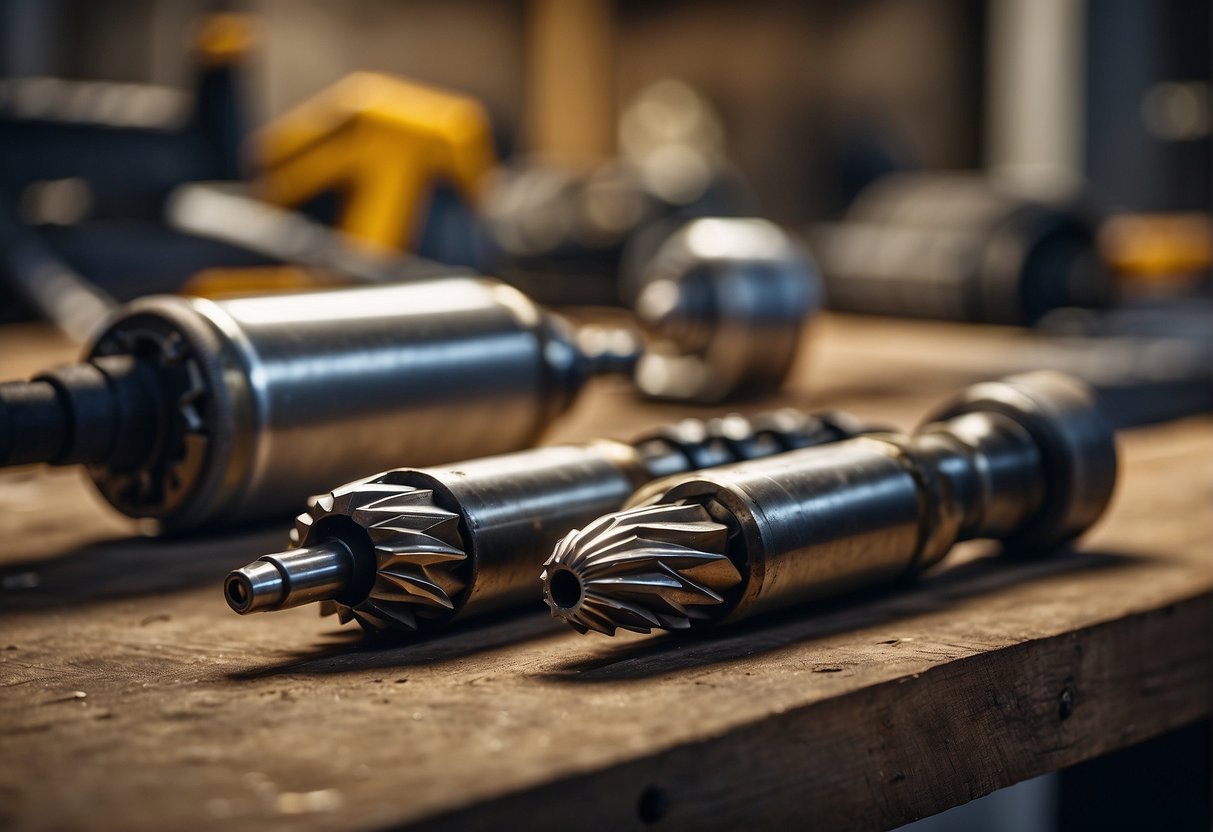When it comes to drilling through tough materials like stainless steel, high-speed steel (HSS) drill bits may not be enough. This is where cobalt drill bits come in, and two of the most popular types are the M35 and M42 cobalt drill bits. As a professional who has worked with both types of drill bits, I can confidently say that understanding the differences between M35 and M42 is essential to choosing the right one for your project.
Composition and Properties
The main difference between M35 and M42 cobalt drill bits is the amount of cobalt they contain. M35 contains 5% cobalt, while M42 contains 8%. Cobalt is added to HSS to increase the drill bit’s hardness, wear resistance, and heat resistance. M42 is considered to be the superior of the two because it has more cobalt and also contains molybdenum, which further enhances its hardness and heat resistance. However, M35 is still a good choice for general-purpose drilling and is more affordable than M42.
Performance and Application
M42 cobalt drill bits are ideal for drilling through hard metals like stainless steel, cast iron, and titanium, as well as other tough materials like ceramics and composites. M35 cobalt drill bits are better suited for drilling through softer metals like aluminum and brass, as well as wood and plastics. It’s important to choose the right type of cobalt drill bit for your project to ensure the best performance and longevity.
Key Takeaways
- M42 cobalt drill bits contain more cobalt and molybdenum than M35, making them superior in hardness, wear resistance, and heat resistance.
- M42 cobalt drill bits are ideal for drilling through hard metals and tough materials, while M35 cobalt drill bits are better suited for softer metals, wood, and plastics.
- Choosing the right type of cobalt drill bit for your project is essential for achieving the best performance and longevity.
Composition and Properties
Material Composition
M35 and M42 drill bits are both made of High-Speed Steel (HSS) with different percentages of cobalt mixed in. M35 includes 5% cobalt, while M42 includes 8% cobalt and additional molybdenum. Cobalt is added to the steel to increase its hardness, strength, and thermal resistance.
HSS is a type of tool steel that is made of carbon, tungsten, and other elements such as vanadium and chromium. It is characterized by its ability to withstand high temperatures and its high hardness. The addition of cobalt to HSS further increases its hardness and thermal resistance, making it ideal for drilling through tough materials such as stainless steel, cast iron, and titanium.
Physical and Chemical Properties
M35 and M42 drill bits have different physical and chemical properties due to their different cobalt percentages. M42 is stronger and more heat-resistant than M35 due to its higher cobalt content. M42 also has a higher melting point than M35, making it more suitable for high-speed drilling applications.
The hardness of M35 and M42 is measured using the Rockwell C scale. M35 has a hardness of 67-69 HRC, while M42 has a hardness of 68-70 HRC. This slight difference in hardness may not seem significant, but it can make a difference in the lifespan of the drill bit when drilling through tough materials.
In summary, M35 and M42 drill bits are both made of HSS with different percentages of cobalt mixed in. Cobalt is added to increase the hardness, strength, and thermal resistance of the steel. M42 is stronger and more heat-resistant than M35 due to its higher cobalt content and has a higher melting point. The hardness of M35 and M42 is measured using the Rockwell C scale, with M42 being slightly harder than M35.
Performance and Application
Drilling Capabilities
When it comes to drilling capabilities, M42 cobalt drill bits are known to be harder and more stable than M35 drill bits. Due to the presence of 8% cobalt, M42 drill bits can withstand higher temperatures and thrust successfully, making them ideal for demanding applications where high-speed drilling is required. On the other hand, M35 drill bits are a mix of 8% cobalt and HSS and are less stable and less hard than M42 drill bits.
Suitable Materials
Both M35 and M42 drill bits are suitable for drilling through a wide range of materials. However, M42 drill bits are better suited for drilling through hard materials such as stainless steel, cast iron, alloy steel, and high-strength steel. M35 drill bits are better suited for drilling through softer materials such as aluminum.
Industry Usage
M42 drill bits are commonly used in industries such as aerospace, automotive, and metal fabrication, where high-speed drilling is required to meet demanding specifications. M35 drill bits are more commonly used in general-purpose drilling applications where high-speed drilling is not required.
In summary, M42 drill bits are harder and more stable than M35 drill bits, making them ideal for demanding applications where high-speed drilling is required. M35 drill bits are better suited for general-purpose drilling applications where high-speed drilling is not required. Both types of drill bits are suitable for drilling through a wide range of materials, but M42 drill bits are better suited for drilling through hard materials such as stainless steel, cast iron, alloy steel, and high-strength steel.
Durability and Heat Resistance
Lifespan and Durability
When it comes to the lifespan and durability of M35 and M42 drill bits, both types are known for their toughness and ability to withstand heavy use. However, M42 drill bits are generally considered to be more durable and last longer than M35 drill bits due to their higher percentage of cobalt. M42 drill bits have a hardness of 68-70 HRC, which is higher than M35 drill bits, making them more resistant to wear and tear.
Heat and Friction Management
Heat and friction are two factors that can affect the lifespan and durability of drill bits. M35 drill bits are made from high-speed steel and are known for their excellent heat resistance. They can withstand high temperatures and are less likely to lose their temper, which can cause them to become brittle and break. However, M42 drill bits are made from cobalt steel and are known for their exceptional heat resistance. They can withstand even higher temperatures than M35 drill bits and are less likely to become dull or damaged due to friction.
In terms of resharpening, both M35 and M42 drill bits can be sharpened multiple times before they need to be replaced. However, M42 drill bits may require less frequent sharpening due to their higher durability and resistance to wear and tear.
Overall, when it comes to durability and heat resistance, M42 drill bits are the clear winner. They are more durable, last longer, and can withstand higher temperatures and friction than M35 drill bits.
Cost and Value Considerations
Initial Purchase Cost
When considering the initial purchase cost of M35 and M42 drill bits, it is important to note that M42 bits are generally more expensive than M35 bits. This is due to the higher percentage of cobalt used in M42 bits, which makes them stronger and more resistant to heat. However, the initial purchase cost of M35 bits is still relatively affordable and budget-friendly, making them a great option for those who do not need the extra strength and durability provided by M42 bits.
Long-Term Value
While M42 bits may have a higher initial purchase cost, they can provide better long-term value due to their longer lifespan. M42 bits are more resistant to wear and tear than M35 bits, which means they may not need to be replaced as often. This can ultimately save money in the long run, making them a cost-effective option for those who use drill bits frequently or for heavy-duty tasks.
It is important to note that the long-term value of M42 bits can vary depending on how they are used and maintained. If they are used improperly or not cared for properly, they may not last as long as expected. On the other hand, if they are used and maintained correctly, they can provide excellent long-term value.
Overall, when considering the cost and value of M35 vs M42 drill bits, it is important to weigh the initial purchase cost against the long-term value. While M42 bits may be more expensive initially, they can provide better long-term value due to their longer lifespan. However, for those who do not need the extra strength and durability provided by M42 bits, M35 bits can still be a cost-effective and affordable option.
Maintenance and Sharpening
Sharpening Techniques
To maintain the sharpness of M35 and M42 drill bits, it is important to follow proper sharpening techniques. One of the most common ways to sharpen drill bits is to use a drill bit sharpener. These sharpeners come in various types and sizes, including handheld sharpeners and bench grinders.
When using a drill bit sharpener, it is important to ensure that the drill bit is properly aligned and secured in the sharpener. This will help to maintain the correct angle and shape of the drill bit. It is also important to follow the manufacturer’s instructions when using a drill bit sharpener.
Another way to sharpen drill bits is to use a sharpening stone. This method requires more skill and practice, but can be effective in maintaining the sharpness of the drill bit. It is important to use the correct type of sharpening stone and to maintain the correct angle and pressure when sharpening.
Maintenance Best Practices
In addition to sharpening, proper maintenance is also important to ensure the longevity and performance of M35 and M42 drill bits. One important practice is to regularly inspect the drill bits for any signs of wear or damage. This can include checking for chips, cracks, or dullness.
If a drill bit is damaged or worn, it may need to be resharpened or replaced. It is also important to use the correct lubricant when drilling to reduce heat and friction, which can cause damage to the drill bit.
Proper storage is also important for maintaining the sharpness and performance of drill bits. It is recommended to store drill bits in a dry and cool location, and to avoid storing them in direct sunlight or near sources of heat.
Overall, proper maintenance and sharpening techniques are important for maintaining the performance and longevity of M35 and M42 drill bits. By following these best practices, you can ensure that your drill bits are always sharp and ready for use.
Frequently Asked Questions
What are the key differences in performance between M35 and M42 cobalt drill bits?
M35 and M42 cobalt drill bits are both made of high-speed steel (HSS) mixed with cobalt. The M35 cobalt drill bit contains 5% cobalt, while the M42 cobalt drill bit contains 8% cobalt. The higher cobalt content in M42 makes it stronger and more heat-resistant than M35. M42 drill bits also have better wear resistance and can withstand higher temperatures. In contrast, M35 drill bits are more affordable and are better suited for general-purpose drilling.
Which type of drill bit is better for drilling through steel: M35 or M42?
If you need to drill through steel, M42 cobalt drill bits are generally a better choice than M35 cobalt drill bits. The higher cobalt content in M42 makes it more heat-resistant and better suited for drilling through harder materials. M42 drill bits can also maintain their sharpness for longer periods of time, making them ideal for heavy-duty drilling applications.
What advantages do M42 cobalt drill bits have over M35 bits for metalworking?
M42 cobalt drill bits are ideal for metalworking due to their higher cobalt content. They are more heat-resistant and can withstand higher temperatures, making them ideal for drilling through harder metals like stainless steel and titanium. M42 drill bits also have better wear resistance, which means they can maintain their sharpness for longer periods of time. This makes them ideal for heavy-duty drilling applications.
How do M35 cobalt drill bits compare to carbide drill bits in terms of durability?
Carbide drill bits are generally more durable than M35 cobalt drill bits. Carbide drill bits are made of tungsten carbide and are designed to withstand high temperatures and heavy-duty drilling applications. M35 cobalt drill bits are more affordable and are better suited for general-purpose drilling. However, if you need to drill through harder materials like steel or titanium, M35 cobalt drill bits may not be the best choice.
What makes M42 cobalt drill bits suitable for heavy-duty drilling applications?
M42 cobalt drill bits are ideal for heavy-duty drilling applications due to their higher cobalt content. The higher cobalt content makes them more heat-resistant and better suited for drilling through harder materials like stainless steel and titanium. M42 drill bits also have better wear resistance, which means they can maintain their sharpness for longer periods of time. This makes them ideal for drilling through tough materials in industrial settings.
Regarding hardness and heat resistance, how do M35 and M42 drill bits differ?
M42 cobalt drill bits are harder and more heat-resistant than M35 cobalt drill bits due to their higher cobalt content. The higher cobalt content makes M42 drill bits more durable and better suited for heavy-duty drilling applications. In contrast, M35 drill bits are more affordable and are better suited for general-purpose drilling.

Hi, I’m Sal Muller of Tooltrip.com. My DIY experience led me to understand essential power tools for home projects. Tooltrip.com guides enthusiasts and professionals in choosing right tools for any job. I provide concise top tool reviews for easier, efficient DIY.

